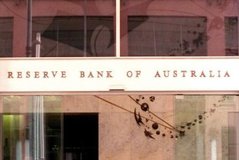Add to this the reality that many of us are going to outlive our savings, and the age we qualify for the government pension is rising, then it’s no surprise that aged care and estate planning are hot topics for government, financial advisers, and families alike.
So what are the important things to consider when you are looking to plan your or a loved one’s life after retirement?
5 Core Issues
1. The costs
Establish entry fees and bonds and ongoing costs of nursing homes and hostels. For residential care make sure you know what the costs are for thing like daily care fees, and income-tested fees;
2. The family home
Consider if someone will continue to live there, or should it be sold or rented out? You might consider options such as a reverse mortgage;
3. Social Security
Find out how to maximise your aged pension entitlement by structuring your assets in the most effective way;
4. Tax
Look at what special tax offsets may be available when living in residential aged care;
5. Estate planning
Have you or your loved ones sorted out the Power of Attorney or Enduring Guardianship?
Government help
In July last year the Australian government launched the Let’s talk about changes to aged care Campaign (myagedcare.com.au). The changes included:
- Greater support to stay independent and in your own home and community with more Home Care Packages to meet your needs;
- Older people being asked to contribute to the costs of care, if they could afford to do so;
- Increased flexibility in ways to pay for accommodation in an aged care home;
- Centrelink providing income testing for people receiving home care, and both income and asset testing for people receiving residential care.
Estate planning
A huge part of aged care planning is estate planning. At its most basic, estate planning is about working through what you want to do with your assets when you die. It’s much more than a will. Effective estate planning is about your asset protection and empowering you with the information and knowledge to make informed conscious choices – so your family is not left stranded or your assets eroded or exposed to systems, processes and challenges you have not factored in or maybe are not fully aware of.
Financial planning
Whatever your preferred choices are for aged care there is a need for preparation and sound financial planning. Speak to one of our Planners at Southern Advisory to discuss your personal situation and to create a plan for your future.
Source: BT





 RSS Feed
RSS Feed
